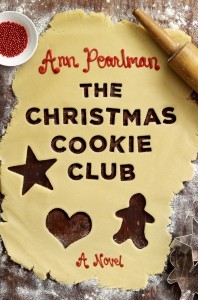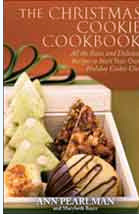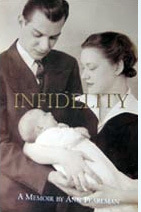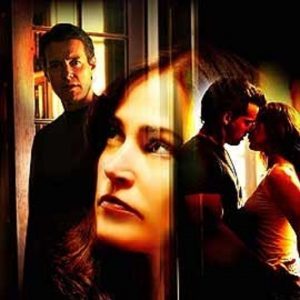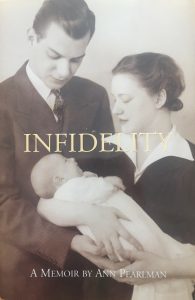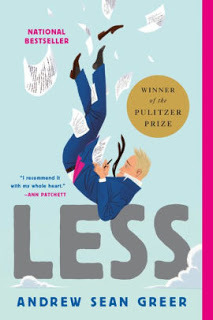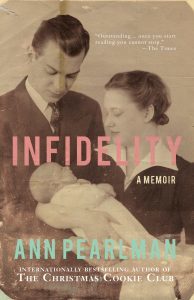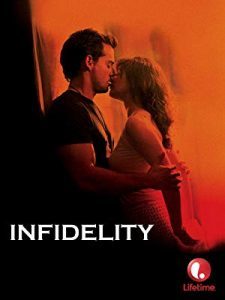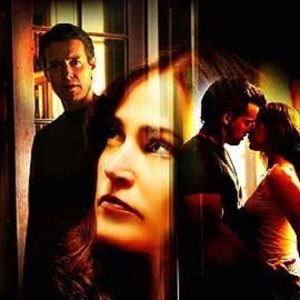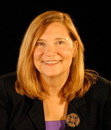Ann Pearlman's Blog
December 8, 2020
A Christmas Cookie Club Party during Covid! Yes, we did it!
Last year, as I ended the story about our annual Christmas Cookie Club party I wished everyone a wonderful holiday season. “ And a peaceful 2020.”
Well, we haven’t had a peaceful year. In fact, 2020 is probably the most chaotic, frightening and tumultuous year for our country during our lifetimes. And yet, we develop ways to keep our cherished traditions and friendship groups alive. For me, and for my cookie club friends, our party, which has been meeting for over two decades, is one of those loved annual traditions.
Yes, we were going to have a pandemic cookie party. So I decided to make peanut butter with chocolate cookies. I used a recipe that won a cookie contest as part of publicity for The Christmas Cookie Club novel of peanut butter cookies, but with the addition of pecans. And since my kids love peanut butter with chocolate, I added melted semi sweet or milk chocolate to the tops of the cookies. Then wrapped them up to be delivered.

We met in front of one member’s garage, and distributed our cookie packages to each of our members. The garage hostess had a fire pit with magical blue flames that helped keep us warm.
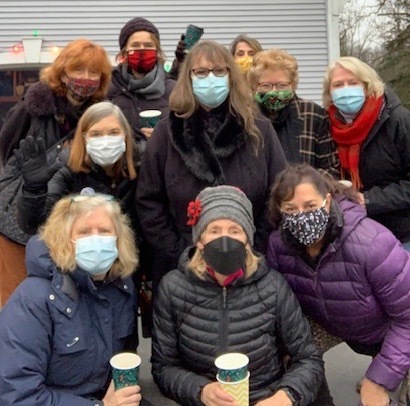 Christmas Cookie Club friends masked
Christmas Cookie Club friends masked to exchange our cookies
Of course, we each donated a dozen cookies to a charity. Because of Covid some of our usual recipients couldn’t take them, but the firefighters were thrilled. “Homemade Christmas cookies! Hell, yeah.”
The next day, the first Monday in December, just like always, was our party. I opened a fortune cookie saved from a take out dinner. The fortune said, “You will attend a party where unusual customs will prevail.” I knew that one would come true soon.
 Packaged Cookies
Packaged CookiesI got dressed for the party, (And put on make-up! ) gathered a plate with each of the cookies, and turned on my computer. Now I had taken Zoom classes, heard Zoom lectures on various subjects, and Zoom conferences and meetings, but I was a Zoom party virgin.
 Zoom Christmas Cookie Party
Zoom Christmas Cookie PartyThere were my dear friends without masks in the little squares. We were able to laugh, talk, taste cookies, and drink wine. Joke and tease. Just be friends together. We continued our usual tradition talking about our cookie recipes, family news, how we were getting through the quarantine restrictions. We shared our usual warmth and good cheer. The months of quarantining and masking and isolation did not diminish our love and enjoyment of each other. And of course the cookies are delicious and will be shared with family and friends.
We didn’t sing, or dance, or eat appetizers. But we were together, celebrating our lives, courage, and the conviction that next year we will be together in person to dance, sing, joke and continue our friendship. Regardless we bring light to the darkest time of the year.
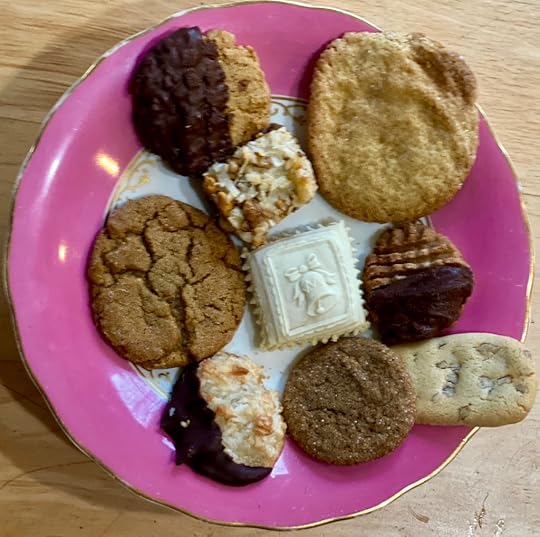
The post A Christmas Cookie Club Party during Covid! Yes, we did it! first appeared on Ann Pearlman.
March 16, 2020
International Connections
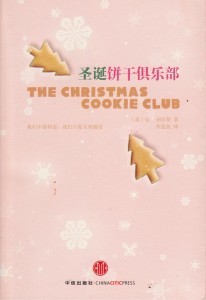
Christmas Cookie Club in Chinese!
Today a friend, a Swiss reader of The Christmas Cookie Club whom I met over the international social media, wrote to make sure that I and my dearest were doing well. Since the publication of the first Christmas Cookie Club book, we’ve communicated. This time, it’s not about cookies, baking or parties, but COVID-19.
One of the thrills of publication of Christmas Cookie Club Series (The Christmas Cookie Club, A Gift for my Sister, and The Lottery) has been its translation into six languages and distribution across the planet. My fans made me aware of the joy I had spread as the internet and social media displayed the pleasure of shared cookie recipes, parties, and charity when cookies were donated to safe houses, hospices, homeless shelters.
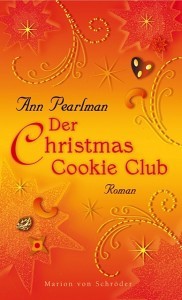
The German version
We saw the oneness in our world. Recipes were shared from Brazil to Croatia, from the U.S. to China. My reader in Switzerland baked my cookies, started a blog in which she baked one of the recipes in the book and posted pictures, directions, in the languages of Switzerland. And English. From the beginning, the international flurry was an exciting part of the publishing. A German critic twitted me her review, I had Google translate it. The next morning, I was on a TV News program and mentioned to the anchor how amazing it was to be communicating with a woman in Germany about my book. The anchor asked me about it on air. I was able to send my new German connection a link so she could watch me marvel about her blog and the immediacy and closeness of all of us.
I heard from readers all over the US, South Africa, Australia, Croatia, Brazil with pictures of their cookie clubs and cookies. A reader from the UK, moved to Australia and, to feel part of her new community, started a cookie club which donated a dozen cookies to the hospice. The hospice director emailed me what a huge difference the cookies made to her patients, and then wrote about it in the hospice newsletter. I was connected to the world in a way I never imagined possible.
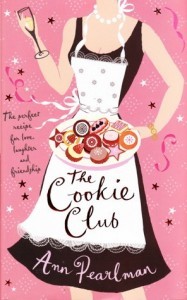
The UK version
Brought together by the magic of the internet, I was reminded how much pleasure and anticipation all the people of the world share. How much we are alike.
Now, we share fear and sorrow across the planet. Just we are linked by our love of family, friends, baking, and sweets and gatherings, we are, alas, connected by possibilities of infecting each other, this time a new virus sweeping the world. I hear from fans quarantined in Europe. Or struggling in Brazil. Or Germany. Or Switzerland. I, too, wash my hands, try to stop touching my face, remind myself to use hand sanitizer when I get into my car. In fact, I am staying at home practicing isolation, other than the internet, the social media, and the phone. My city is shut down. All performances, lectures, cancelled. Schools and universities closed.
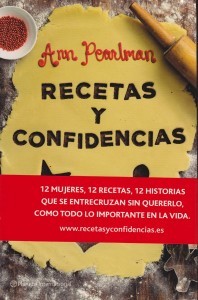
Spanish version
Then as a reminder of the delightful connections, I was notified of publicity for the UK version of my novel from New South Wales, Australia. The network reasserts itself, reminds me that in spite of the social isolation encouraged across the world now, there are friends, celebrations, and delight to come. We are linked together and share both celebrations and hard times.
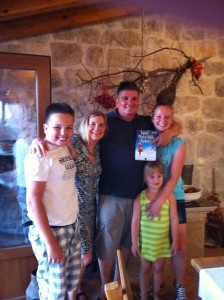
Croation version of book with family in Gromaca, Croatia!
I hope that I and all who are dearest to me stay well. I hope that you, my readers, fans, the people of our planet take care of themselves and each other. I am reminded, once again, of our similarities … the positive ones of love of friends and cookies and, alas, the negatives of being vulnerable to germs, and loss, suffering, and impact it may have throughout the world.
The COVID-19 has reinforced what the publication of the Cookie Club books taught me. We are truly connected. All of us everywhere on this spectacular small planet. This morning I saw a video of Italians singing together from their balconies, reaching out with pleasure, a hallmark of being human. Let’s each of us do our best in this hard time. Because, this too will pass. I wish all of you well.
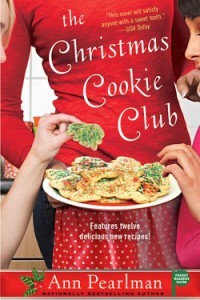
The US paperback version
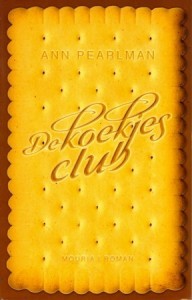
The Dutch Version
December 10, 2019
Cookie Party Time!
Monday evening, we gathered for our annual cookie party. I had made fifteen dozen pecan butter balls, placed them in baggies with a little extra confectioners sugar, wrapped them in red and green patterned tissue paper, and tucked them in decorated bags with a curly bow.
This was my nineteenth party! Yes I joined in 2000…but I was a late to the fun. The club started in the 80s with just two friends mixing and stirring up cookie dough and grew to twelve. A cap was put on number of members because 13 dozen cookies is enough to make and one dozen is donated to charity. Each member gets to leave the party with eleven dozen cookies made by friends.
I had to wait for someone to drop out to be the cookie virgin.
When the party first began, the party goers would go dancing after the cookie exchange. But we have gone from young women to early middle age to late middle age to early old. Many of us are busily retired… taking classes, volunteering, playing golf, doing Zumba, yoga, visiting grandchildren, traveling, writing. We have gotten divorced, been widowed, cared for and buried aging parents and children, beat cancer, remarried, had grandchildren. Several of us left our city making room for new cookie virgins. In fact, the head cookie bitch and club originator moved to be closer to her family and grandchildren. Since then the location of the party has shifted around the members.
I had planned to create a new cookie this year. But alas my oven was on the fritz and would occasionally conk out. It was too old to repair. A new one was installed a day before it was time for me to cook for the party. I decided to make my favorite cookie, the pecan butter balls that is my grandmother’s recipe. It is fitting that the first thing I baked in my new oven is such a tradition in my family and is also the first recipe in my novel.
Last night, I was reminded that one year a reporter came to our party. The Christmas Cookie Club had just been released and she wanted to witness the inspiration for the novel’s setting, and taste some of the cookies whose recipes were included at the beginning of each chapter.
This year, a blog in Croatia wrote about cookie clubs and the novel.
The Christmas Cookie Club series (there are three novels: The Christmas Cookie Club, A Gift for My Sister, and The Lottery) continues to garner readers and inspire cookie clubs. Our cookie club inspires parties, and friendship, and charity around the world most recently in Croatia. Simon and Schuster has released a sample of the audio.
It’s a commemoration of friendship and sharing as we talk, eat, sing, share the events of the year with each other along with our love of our cooking and decorating. Yes, year after the year the celebration is a festival of joy, love, laughter, lights and great food in spite of the rushing cold and darkness.
Together we bring light into the darkest time of the year.
Have a wonderful holiday season! and a peaceful 2020.
July 29, 2019
Christmas in July: New Honor for The Christmas Cookie Cookbook!
Every once in a while a wonderful surprise is buried among the mountain of emails with great news. Last week an email from my website notified me that my cookbook, The Christmas Cookie Cookbook is included in a list of 11 Delectable Reads for Foodies and Those who Love to Cook! And am especially thrilled that book Marybeth Bayer and I wrote happens to be listed first!
Ironically, the days before, I mulled over what cookie to bake for this year’s cookie club.
Yes! In July. In the heat of summer. In the midst of seeing girlfriends for happy-hour downtown, meeting for walks in the parks or by the river, I start to make plans for fall and the holidays.
Part of it is that we’re scattered during summer and the cookie club gathers us together for a celebration of friends, family, and community. Each of us bakes an extra dozen cookies for a charity, either Safe House, or Hospice –which imbues the giving, thankful spirit of the winter festivals into the work of cooking, and the party itself. And of course the party and sharing our cookies is a celebration of friendship.
Attending the first cookie party was the seed for my novel, The Christmas Cookie Club. Cookie recipes begin each chapter sparking the idea for the cookbook with even more additional recipes and suggestions on how to do a holiday cookie club. Since writing the books, (there’re three novels in series, each with cookie recipes.), I’ve heard from people all over the world about their cookie clubs. Many had been gathering for years and many started clubs after reading the book. I received pictures of plates of gorgeous cookies, smiling cooks from across the planet.
It made our world smaller. I became aware of the blessing of the internet: A woman who had just moved to Australia found my book and decided she’d throw a party for her new neighbors and they gave cookies to the hospice. The director of the hospice thanked me for the inspiration from book and explaining what an meaningful difference home baked cookies made for several people during their final Christmas. Two sisters were reunited by the book. (That story is in this blog!) A woman in Switzerland used the recipes in her bakery!
Marybeth Bayer, the hostess of my cookie party, co-wrote the book with me. We wrote it because cookie parties are an inexpensive way to celebrate those we care about and help our communities. Bonds are built by sharing fun and stories.
Of course, as soon as I received notice of this new honor from Wiki EXvid.com, I contacted Marybeth…who was thrilled that her idea for a party continues growing its own life.
In this blog there are several additional recipes for cookies.
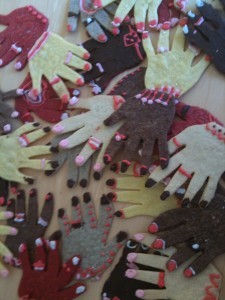
And stories from other cookie clubs; here’s one in Switzerland
And here’s a video of the cookies being made at Zingerman’s Bakery.
And thank you, Wiki.ezvid.com for the honor of being included in your list and being number 1!
May 1, 2019
The Story of Infidelity: The Publishing Roller Coaster
“Infidelity is a page turner, loved the magical childhood parts. And so honest. That’s the most important thing for a memoir. I’m sending it out tomorrow. I know this is going to sell.” Never had I heard my agent so excited.
I poured my hope, heart, and several years of my creative time in the book, but I knew from past experience that success in the arts depends on luck and timing as well as talent, passion, and hard work.
Infidelity gathers 38 rejections, which I drop in a file with rebuffs from short stories, and novels. “I’m not giving up on this book,” my agent reassures me. “Something good is going to happen.” I didn’t believe her. My hopes were squashed by the refusals.
A half a year later, she calls. “Guess what. I just sold infidelity to Macadam/Cage for the initial launch of their publishing company.” After talking with Pat Walsh and Dave Poindexter, their spirit-catching enthusiasm about their new adventure quickened my exhilaration especially when they decided to make Infidelity the lead book of their inaugural season. They pushed the pub date so that it could be released in nine months.
The time of a pregnancy.
Pat came to my house and fell in love with a picture of my mom, dad, and me when I was about three months old. The photo became the cover of the book. I took him dancing that night and I don’t know if he’s forgiven me yet for the pain in his legs!
A few weeks before pub date, Pat called to tell me Infidelity received a star review from Publisher’s Weekly. I didn’t know the importance of this award, but caught his contagious excitement.The star stimulated a forced auction for the paperback rights which sold to Gerald Howard at Broadway Books for the second highest sum that year after Egger’s A Heartbreaking Work of Staggering Genius. Almost immediately, Hodder and Stoughton bought the hardback and the paperback rights, publishing Infidelity in both the UK and Australia.
Lionsgate bought the movie rights. My agent’s belief and my years of work were no longer folly.
Along with a new author escort in each city, I went on a national road tour from NYC to Portland, Oregon with TV, radio, and press which provoked articles in O, Elle, Entertainment Weekly, Good Living, Weekend. Interviewers and their audiences (even the camera men) were compelled by the subject since adultery is so painful and causative in 65% of all divorces. Right before one TV appearance, Pat informed me Infidelity had been nominated for the Pulitzer and the National Book Award. “Guess what? I just heard that Infidelity was nominated for the Pulitzer,” I announced on the live on-air program. My writing dreams had come true.
Broadway Books planned a second tour and the launch date was set for September 11, 2001. I delivered my daughter for her freshman year at NYU at the end of August, ecstatic at the vision of the moon hanging between the twin towers from the roof of my hotel.
“A huge display of your book is set up in the Barnes and Nobles in the World Trade Center,” Broadway’s publicity director emailed me on Sept. 10. “Everything’s ready for our launch tomorrow.”
Everything changed.
My daughter was scared. Giving blood and making sandwiches. But okay.
Several days later, I remembered my book launch. Hundreds of beautiful paperbacks of Infidelity were mixed with the rubble of the World’s Trade Center. The Broadway tour was limp. Book conferences were empty; authors were reluctant to fly for presentations, flights had been cancelled. One radio interviewer asked me, “When we’ve just been attacked by terrorists, why should we concerned about adultery?” My only answer: “Well, I guess when it’s happening to you, it feels like an attack on you and your family.” At a reading, only one person attended and it ended up a therapy session as she had just discovered her husband was having an affair.
However, in the UK and Australia the excitement about Infidelity continued. Each country featured a cover article in the magazine section of their largest newspaper. Good Weekend’s (Morning Herald Sept 2001) was 51/2 pages. Life’s the Observor Magazine was 6 full pages. According to the head of Broadway Books, it was like being featured in the New York Times Magazine section. I did an international radio show with the BBC.
Years passed. I forgot about the movie deal. My kids complained about the publicity, especially in our local newspapers and magazines. I reassured them that the movie rights were about to expire and so no one needed to worry about more publicity.
Infidelity was behind me.
But…. I was in Mexico finishing a scene of a riot in Corcoran prison yard for Inside the Crips , I hit an internet cafe and discovered an email from Pat. Lionsgate exercised their option and a movie was in the works. In fact, shooting was scheduled in a few weeks. “Would you like to go to the set?” Pat asked. “Weirdly, the movie producers forgot it’s a memoir and changed it quite a bit.” Pat hadn’t read the script but when he finished it, he’d send it to me. He wanted to give me the heads up. The next day, I received a long email from him. The producer set the movie in New Orleans, made my ex-husband white, changed all our names—I was now Kathryn—and I was the one who committed adultery with a Latino Jazz musician! And most weirdly of all, I did not want to be a mother. Obviously it was not my book. They flipped the entire plot 180 degrees. Pat enclosed the script as an attachment, but I couldn’t download it in Mexico. I’d have to wait till I returned to the U.S.
I was surprised at my own lack of anger. Instead, I chucked at the huge irony. Another paradox of my writing life. A movie about my life that was not my life. I wasn’t annoyed about the fact that the character that was sort-of-me committed adultery. The irony was too perfect, almost funny. Women commit adultery almost as much as men. Maybe the movie would open up the discussion.
Right before Mardi Gras, I was in New Orleans in the Garden District on the set. I appreciated being part of an collaborative art project and was impressed at the illusions in setting the scene and the immense concentration of the actors as they got in and our of their role remembering every nuance of their previous position to continue the scene without an obvious cut.
As much as they changed the plot, they left one scene completely intact from the book: I am a child sitting by the window, watching the street for my Daddy to return. The little girl who played me was excited both by getting to be in a movie, and now meeting the author of the book. “You’re me as a grown up,” she said. “Well, my character.”I laughed. For me, here was an actual scene from my childhood, but the adult movie-me grew up to be so different than the real-me. An incongruent reality amidst twisted inventions. I also got to rewrite parts of the script, therapy scenes in particular. Making a movie is a living process. Like a book, not finished until it’s out.
I was saddened when I heard MacAdam/Cage had been swallowed by the tremendous changes in publishing in the last decade. They did a fabulous job of launching writers, cherishing, and preserving writing, while developing and preserving a notable backlist. Pat and Dave were always encouraging and supportive, especially to new writers and unconventional styles.
Now, here I am once again at the start of an adventure. I’m delighted that Infidelity is getting a rebirth with Dzanc Books and eager for the loops, ups and down of a new voyage. The story of Infidelity, with its rejections, sale, publication, old fashioned media tour, auctions, victim of a terrorist attack, and the crazy flip flop of the movie is part of the world of publishing.
For to be a writer, to be any kind of artist, or maybe simply to be alive and invested in your own narrative is to be on a rollercoaster, your talent, work, and passion swooped by the twin tails of luck.
A version of this article appeared on the Dzanc Books Website. Thank you, Michelle Dotter, for everything!
March 25, 2019
“INFIDELITY” SHARES TRUE TALES OF GENERATION-SPANNING MARITAL BETRAYALS
Certain topics are so intensely personal that people tend to shy away from discussing them, but sometimes they must be talked about; sharing stories can lead to understanding, healing, a new life.
Adultery, something that is often hidden under the proverbial rug, is one of those topics. But a recently re-released book by a local author explores this topic in prodigious detail and with great empathy.
Ann Pearlman‘s Infidelity shares the true tales of three generations of marital betrayals. Dzanc Books recently re-released the book and Pearlman “was thrilled and surprised they wanted to reprint it. The launch has been scads of fun.” Infidelity was originally released in 2000 and was the inspiration for a 2004 Lifetime Movie Network film with the same name, albeit the roles are reversed: the marriage therapist is unfaithful in the film.
In many ways, Pearlman was the perfect person to write this book. The Ann Arbor resident has worked as a psychotherapist and marriage counselor, serving in schools, women’s prisons, child guidance clinics. Along the way she married, becoming half of what she thought was the perfect couple.
They had three children while Pearlman continued her work, authoring books and appearing in the media as an expert on the joys of marriage and fidelity.
But then the other half of her perfect couple repeated the sins of generations’ past.
“I went to my writing journals to help me through [the infidelity],” Pearlman says. “I found myself looking at a 400-page journal … talking about my mother and grandmother’s history and I started thinking how important this story was. As I was trying to figure out what had happened in my life, the memoir grew.”
Initially, Pearlman had a whole section of the book detailing what she had learned from decades of working with patients and their experiences. “But my editor convinced me that my story had enough on its own,” she says.
The details in the stories are remarkable, quickly drawing the reader in. “I always had a good memory and have been a writer almost my whole life,” Pearlman says, whose love of writing began with an 8th-grade assignment.
“My teacher asked us to write a letter thanking people who donated a painting to our school, so I wrote my first poem,” she says. “After that, I was hooked.”
Since then, Pearlman says she has always “written, made art, talked to people about art,” especially when experiencing trauma such as an unfaithful spouse.
The book also shares truths that many women will recognize, such as when Pearlman’s mother tells her to beware of the three Ds: death, divorce, desertion. Even though at the time many women only went to college to get a husband, Pearlman’s mom advises that she make sure she is always able to support her children. During her college years, Pearlman herself realizes that “for women, even in America, the quality of life is determined first by her father and then by her husband.”
Pearlman shares many other gems of wisdom and understanding throughout the book, saying that she wants to make sure that readers know that you can heal a relationship after infidelity so that it is stronger and better than ever. “In other words,” she says. “An affair does not mean the end of the relationship. … Regardless of what happens, you have a new life and you can do with it what you want.”
Pearlman has started a new life, retiring from private practice but continuing to write, describing the act “as taking dictation from the universe.”
This post first appeared in PULP, an Ann Arbor Public Library blog and was written by Patti F. Smith a special education teacher and writer who lives in Ann Arbor with her husband.
February 1, 2019
The Page 99 Test
“Open the book to page ninety-nine and read, and the quality of the whole will be revealed to you.” –Ford Madox Ford
I applied the “Page 99 Test” to the re-released edition of Infidelity and reported the following:
Page 99 of Infidelity centers on ethnicity and race in an American family, which is a secondary theme of my memoir. Every family in the United States has an immigration story tied to ethnicity and race. My family of origin is multi religious and multi ethnic: Russian Jewish, German Christian. I fell in love with an African American man, Ty. On page 99, I introduce Ty to my parents.
It is 1962. Ty has finished his senior year as the captain of Iowa’s football team, and is visiting me in between professional football games. We are having dinner with my family at their home in a suburb of Pittsburgh. The page starts as I try to fight against the stereotypes that are so prevalent about African Americans:“His family is just the salt of the earth, hard-working, churchgoing, doing what you’re supposed to do kind of people.” My fork stabs a tomato and lettuce. “Ty’s the first one who’s gone to a university.”
“My brothers both have associates degrees from the community college.” Ty speaks of the importance of education to his father, his father who had to drop out of school in the eighth grade to help support his mother and because they couldn’t afford the books or shoes required if he were to attend high school.
[image error]We settle in for a guess-who-is-coming-to-dinner situation, way before the movie was produced.
An argument between my father and Ty develops as my father tries to stop or delay our marriage. He speaks from his liberal concern about our future and Ty argues from his position as the first person in his family to go to college and the first black captain of a Big Ten football team. He knows full well the possibility of being an outlier, while my father, the entrepreneur businessman, focuses on capturing the money lust of masses and plays the averages. The discussion reveals subtle aspects of implicit bias and vast differences in experience.
Later, my father asks:
“I wonder how much you’ve really considered this. I mean, if you knew that most interracial couples regret it, would that make you reconsider?”
“Not necessarily,” Ty’s fingers cup the curves of the swan’s head on the arms of the chair, seemingly relaxed.
“I mean, if I showed you that ninety-five percent of interracial couples regret it after ten, twenty years, would that convince you?”
[image error]“I know how statistics can be manipulated.”
My father was right: there is no way of getting away from being Black, or Jewish or German or Anglo Saxon or any of all the myriad of colors and cultures that make us who we are. And so was Ty. An individual is able to break away from the bell curve. There have been epochs of increasing inclusion and growing civil rights. The memoir ends in the mid nineties. Long before the swing of the 21st century between an election of a biracial president and Americans marching with swastikas in our streets. When the conversation on page 99 took place, racial divisions seemed they could be resolved. But as our present turmoil exposes, racism and inequality continue to plague our country.
This blog first appeared in September 2108 on the official blog of The Campaign for the American Reader, an independent initiative to encourage more readers to read more books.
Marshal Zeringue added this about the book: “Ann Pearlman has won vast critical and commercial success for her fiction and nonfiction books. Keep the Home Fires Burning: How to Have an Affair With Your Spouse garnered the attention of the Oprah Winfrey Show and was featured on many other talk shows. Her memoir, Infidelity, was nominated for National Book Award and a Pulitzer Prize, and made into a Lifetime movie by Lionsgate. Inside the Crips, with a foreword by Ice T, took readers into the life of a Crip gang member and the California Prison system. Her first novel, The Christmas Cookie Club, became an international bestseller, spawning cookie exchanges and a follow-up cookbook. A Gift for My Sister won first place in the Sharp Writ Book Awards, 2013. She lives in Ann Arbor, MI.
Thank you for letting me appear on your blog and also for encouraging more reading.
January 8, 2019
Getting a Pulitzer nomination
I don’t remember which city I was in or which TV show I was about to do. My make up was done, and I waited in the green room ready to be ushered onto the set for the interview. Probably swinging my leg in nervousness.
I was on the book tour for Infidelity composed of hops across the country, a different city every other day, driven by a publisher’s escort from radio station, to TV news program, newspaper interview, radio talk show, book store reading and finally, my hotel.
My phone rang. It was the senior editor of the publishing house. “Ann?”
“Hi, What’s up?”
“Good news. Great news. Infidelity has been officially nominated for a Pulitzer.”
“What?” My voice screeched. “You’re kidding.”
He laughed. “Not at all. You’ve been nominated for a Pulitzer Prize. Congratulations.”
“Really?” Is this a dream?
The producer for the show entered. “Ms Pearlman, we’re ready for you.”
“I’m going on a live TV show. Right now. I’ll call you the minute I’m finished.”
While the station played an advertisement, I sat down, smoothed the skirt of my dress over my legs. The make up man powdered the host’s face, then mine. I grinned thinking about the Pulitzer while a mike was fastened to my collar.
The Pulitzer? How did that happen? My heart pounded so I couldn’t tell what was excitement about the news and what was nervousness about the live TV show.

The book had received more attention than I anticipated. Especially after months of rejections, I was thrilled it was going to be published. Then, it received surprising applause: a starred review by Publisher’s Weekly, a forced auction for the paperback rights.
And now this.
So the host said, “How are you, Ann?”
He was making small talk before introducing me, but I was way too excited to follow the ritualized procedures.
“Guess what? I still can’t believe it. I just learned that Infidelity has been nominated for a Pulitzer.” My words were as rapid fire as my heart.
“Just now?”
“Thirty seconds ago. In your green room,” I pointed in the direction with my thumb. “From my editor. You’re the first person I’ve been able to tell. First time I said it aloud.”
The host’s eyes widened. “You mean I got a scoop?”
“I guess.”
I don’t remember the interview. He did announce the good news and I’m sure he had a series of questions the producer suggested. I assume I inhaled deeply and became once again the professional who focused on the topic of the moment.
Once home, the Pulitzer nomination seemed like a dream, as unattached to my regular life of being a mother, therapist, writer as the book tour. The Pulitzer nomination was like a jump into a different world. But it was also an invisible change, one of those events like the first time you make love, or land a wonderful job. I was as invisible and anonymous as I had always been. I told my family and close friends. Each time I basked in their excitement and slowly it began to seem real.
Meanwhile, the promotion for Infidelity continued. I appeared on 51 radio programs, 11 Television programs, 24 print media. Some of these were big, some of them fell flat. I was set to appear on Good Morning America. Unfortunately, I burst a blood vessel in my eye doing push ups. Even two weeks later, my daughter told me, with the white of my left eye bright red, I looked like Satan. Once in New York, I was warned that Siamese Twins were just born and may bounce me.
They did. My interview was taped. But, as far as I know, never showed. I continued my tour.
When the tour ended, I resumed my ordinary life. I worked on a novel that I had started, took care of my psychotherapy practice, raised my children.
By December, I had not heard anything further about the Pulitzer. My book was not one of the finalists, I realized as I baked 13 dozen cookies for a Christmas cookie exchange.
By the time the winners were announced, I had incorporated that Infidelity would not be among them. But that did not take away the thrill and sense of honor of the nomination. The sense of accomplishment and pleasure has remained. Along with a Lionsgate movie based on it, the Pulitzer nomination has become part of the WOW factor associated with Infidelity.
Accolades and prizes mingle with the rejections, mixed reviews and unpublished books.
Facebook and Twitter were not in play. Or at least, I wasn’t part of them and publishers were not encouraging authors to be on social media. This was at the turn of the century. Amazon and ereaders were lurking in the future. Since then, and rapidly, publishing changed. When my next books were marketed, the Pulitzer was mentioned in my publicity. Even almost two decades later, the nomination sings loudly that my writing was deemed sufficiently strong to deserve throwing it in such a prestigious ring. But it guarantees little in itself. I still have the same hoops to jump through to get published. Perhaps the gatekeepers pay more attention to my work, but if so, that’s invisible.
And me? We get used to our failures and settle into our achievements carrying them forward as we continue our voyage. Additionally, there are always two tracks in writing. One is the writing and the sense of meaning, thrall and sense it makes of the world. The other is the “success” in the market place. Sometimes the market place supports the writing. But praise and success in one project guarantee little. Meanwhile, we writers will write, be transported, extract meaning and yearn over our work. It’s how I make sense of the world and share that with others.
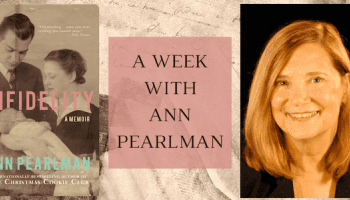
This post originally appeared on Terri Giuliano Long’s blog and with an excerpt from Infidelity.
Terri and I have shared blogs as well as radio shows and our books before. It’s always a pleasure to work with her.

December 12, 2018
Serendipity in Books I Read this Year
This is the time for reviewing the year. Newspapers and online columns list of best books of the year.
This year, I read three novels back-to-back examining romantic relationships in which one partner was significantly younger than the other. Although I have been involved with much older lovers and much younger lovers, I had not planned to embark on mini research into novels about May- September romances. Rather, I choose each book for reasons unrelated to romance and ended perplexed they had such a similar plot focus.
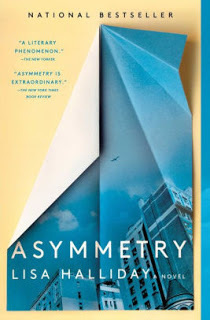
The first was Asymmetry by Lisa Halliday, which was hailed as an unforgettable novel about luck, love and the entwining of life and art. I have been perennially fascinated by these topics, which have been themes in several of my novels. Philip Roth inspired one of the characters and I chose to read Asymmetry partly because of my appreciation of his writing. The first third of the novel focuses on the love affair of a young woman and her lover who is forty plus years older and a famous writer. The final third is an interview of that same lover about his writing.
Less, the second novel, won the Pulitzer Prize for fiction and I wanted to familiarize myself with Andrew Sean Greer’s writing. Plus I was intrigued that it concerned a writer turning 50 reviewing his life and career while hoping across the world from one literary event to another. However, his love life is bracketed first by a relationship with a much older man (his first love) and more recently a much younger man (his most recent love). Much driving his voyage and the plot were spurred by these relationships and exploring the different vantage points.
I chose Julian Barnes’ The Only Story because I loved The Sense of an Ending. In this novel, the love affair is between a nineteen year old man and a 40 something married woman which, as the title implies, ends up informing the story of his life, but not especially happily.
Three books coincidently had similar, atypical plot elements of September-May relationships of various configurations. I wondered at the coincidence and asked myself if there’s a “message from the universe” in the happenstance?
In the first two books, the underlying friendship and respect continue regardless of the age difference, or personality issues ending the lovership. In the Barnes’ book, the mental health issues of the older woman end up tweaking her young lover’s life in such a way that this first relationship remains his only story. His love and concern for her trap him so he does not form another significant relationship. He becomes the parental figure. Each novel presented windows to different life experiences on the same theme with occasional truths. The assumption that the older partner was “parental” did not hold true.
So did I love all these books? No. I was entertained by them, each in a different way, and I was exposed to different lives and minds which is a hallmark of a good novel. The language in all three sang and offered profound sentences and prose exhilaration. Enough of a reason to read, I think.
But what’s the take away about lovers of vastly different ages? As to be expected, there really isn’t any universal. Except the obvious that ends up being hallmark in all love: the importance of friendship, caring, and acceptance. And the enormous sadness of loss.
About Infidelity: A Memoir, from the publisher:
She thought they were the perfect couple. She authored Keep the Home Fires Burning: How to Have an Affair with Your Spouse and appeared on Oprah, Donahue, and Sally Jessy Raphael as an expert on the joys of sexual monogamy. She was a marriage and family therapist who counseled patients coping with cheating spouses. She believed she had escaped her family legacy of marital infidelity. She was wrong. After thirty years of marriage and three children, Ann Pearlman discovered her husband’s affair with another woman.
In Infidelity, Pearlman tells the true story of the devastating effect of adultery across three generations of American women. An award-winning author, columnist, psychotherapist, marriage and family therapist, Pearlman draws on sociological and anthropological works as well as her own experience to write out her rage, pain, depression, doubts, and, eventually, her journey back to confidence and strength. Originally published by MacAdam/Cage in 2000, Infidelity was nominated for a Pulitzer Prize and the National Book Award, and also served as the inspiration for a Lionsgate film.
This column appeared several months ago on the campaign for the American reader.
Thank you, Marshal Zeringue.
Here is another column about Infidelity that he published.
–Marshal Zeringue
November 13, 2018
Shooting the Movie of Infidelity: On the Set
(This is Part II. Read Part I here)
The most important effect on my career was what I learned from the process. The next was the WOW factor.
On the set in New Orleans, I recognized many of the actors from movies and TV programs and watched them switch to their roles of my family and me. Actors remembered exactly where they were positioned, the directions their eyes gazed, the tilt of their bodies when the director said, “cut.” Then, in a flash, they resumed that arrangement when the shooting restarted. Even if it were the next day.
Art directors created illusions, blacking out the windows so it could be night, or a storm. All of this was new to me and exciting.
Each of the contributors to the movie was committed to use the best of their talent, and concentration. They thought deeply about the characters and related it to their own experience. The frivolity with which movie personnel are treated (the red carpet, gossip, prurient interest in their lives) doesn’t capture the passion, serious concentration, and dedication they bring to their work.
While there, I was asked to rewrite a few scenes, especially therapy scenes that the director and actors thought needed tweaked. Writing screenplay lines entailed a switch from book dialogue. In a script, the action is told above the dialogue; the speaker’s name has a colon next to the line and there’re no quotation marks.
Some of the actors, extras, and wardrobe personnel were also musicians. During breaks, they gathered around an upright piano. Their music added atmosphere and a welcome spark of energy.
A craft table laden with healthy, full meals, junk food of all sorts, coffee was available all day and into the night. Scenes were shot from early morning until late night. One actor stayed in her trailer, having her assistants bring her meals. She carried her stiletto shoes, slipping into them when necessary for scenes, but usually wearing furry slippers.
One scene in the script was exactly as I had written a vivid memory from my childhood. The little girl who was to play that scene, along with her mom, waited in the bedroom upstairs. She was thrilled to meet me, the woman her character would become when grown. And the author of the book.
But the character she played in the movie would grow up to become the opposite of me. A strange dislocation of fiction and reality.
Unfortunately, I couldn’t watch the little girl act. A family dinner scene had to be redone. When I saw the movie, the child’s scene had been cut. I imagined her disappointment.
The family dinner scene, which I spent a day and a half watching at the shoot, lasted five minutes in the movie.
The exhilaration, the energy so palpable on the set between the actors, had shrunk. But I had learned from my previous TV appearances, the film doesn’t look as exciting, and rich as the actual experience.
Three take aways:
1. The WOW factor that a movie had been made from my book has followed my career and perhaps engendered a more considered look at new projects. Agents, editors, publishers, fans are impressed. The movie is evidence that I wrote something that was bought, produced and turned into another project, creating jobs, fun, and income. A movie pushes sales of your book.
It’s hard to tease out which factors help push your writing forward. Infidelity was also nominated for very significant awards.
2. We writers usually work in isolation, but there’s a special joy to collaboration. A movie, like a play or an orchestra, engenders a temporary working group and, because of the long hours, new location, heightened emotions, and stress becomes a temporary family. The focus is on giving everything you have to make new art. The author has the unique opportunity to experience being involved with group creation. I learned more about partnership and became impressed with what goes into making a movie and the artistry of the people involved. There’s dedicated communal work and the joy of being part of a team.
3. It’s great fun to see actors reading lines I wrote, both the ones I did on the set and those that were verbatim from my book.
A career in the arts is the ultimate roller coaster ride. One year you’re selling movie rights, the next year you can’t place a novel. One year a book is heading for auction and the figure grows beyond your fantasy; a few years later you’re looking for a new agent.
There are never any guarantees… nothing assures that your next book will be published. You can’t coast on past success. You’re always brand new with each project. You learn as you go along and have successes. Regardless of the market, joy and a sense of meaning is present with each creation. Enjoy the ride.
This blog first appeared in Women Writers, Women’s Books. Thank you so much, Barbara Bos.




